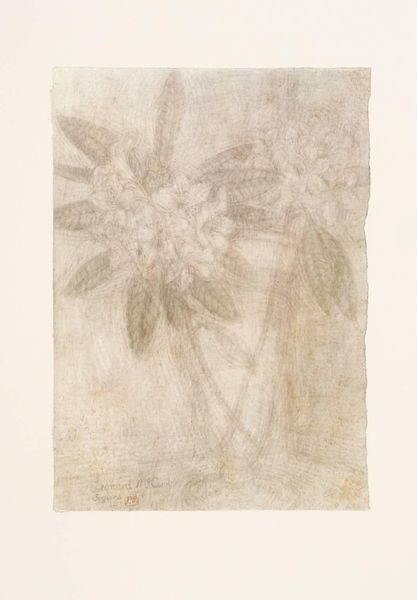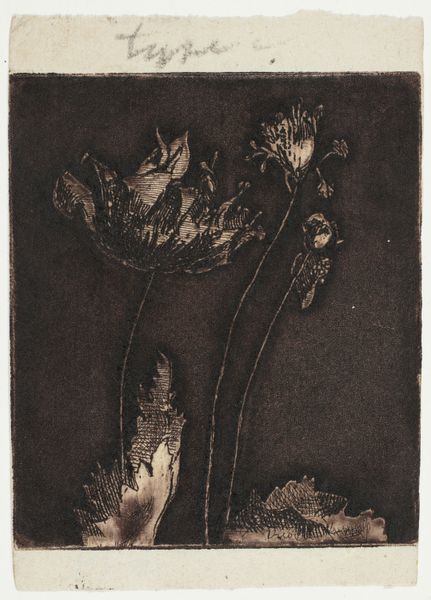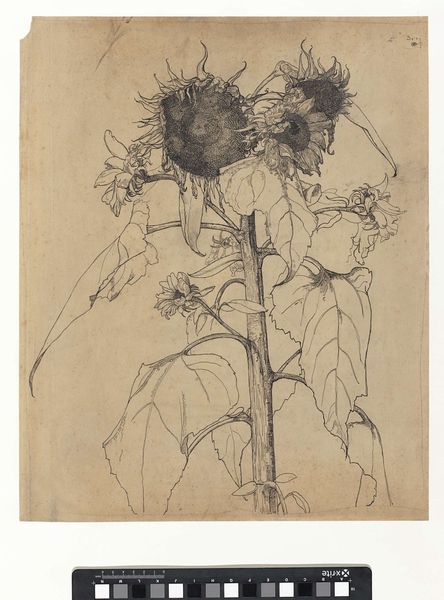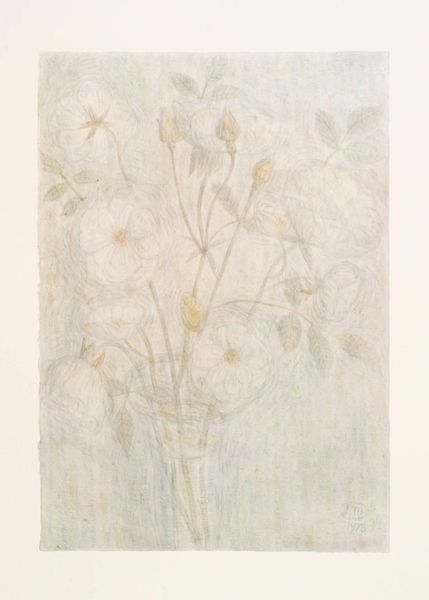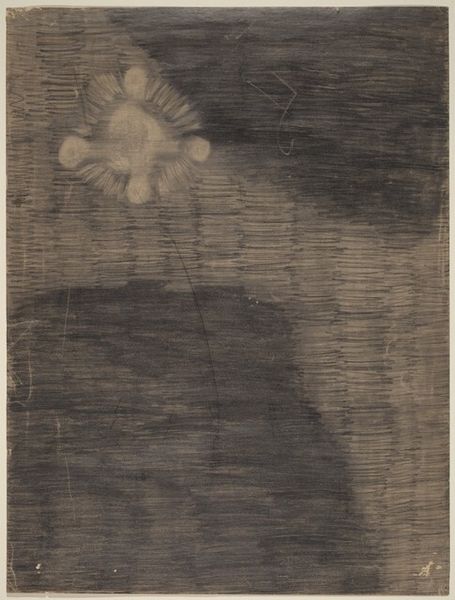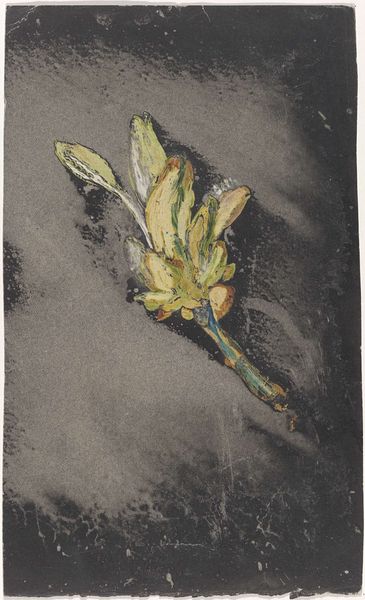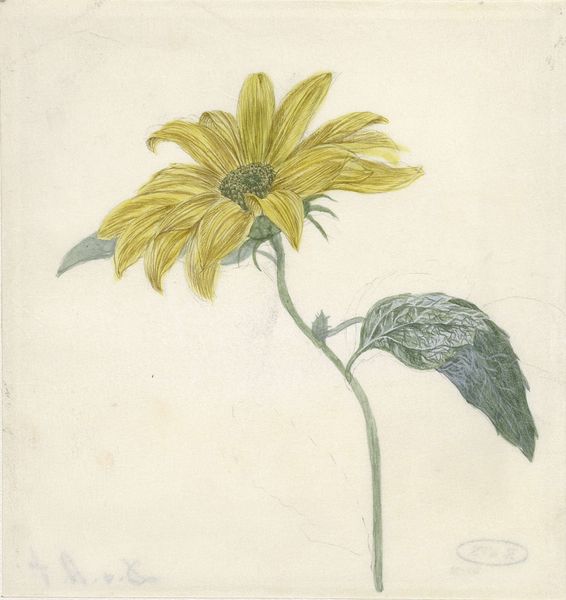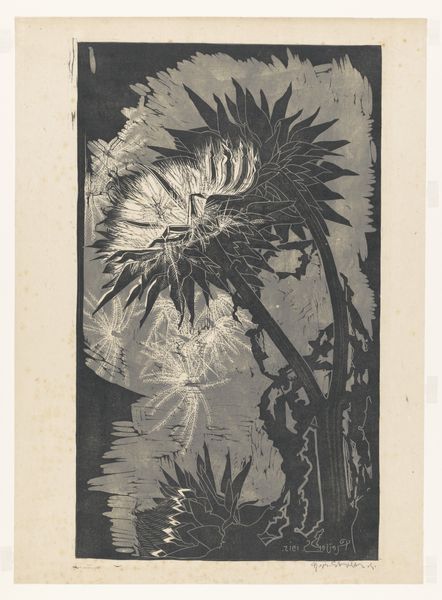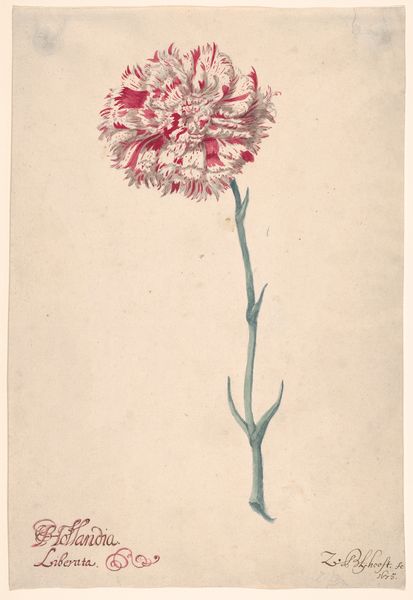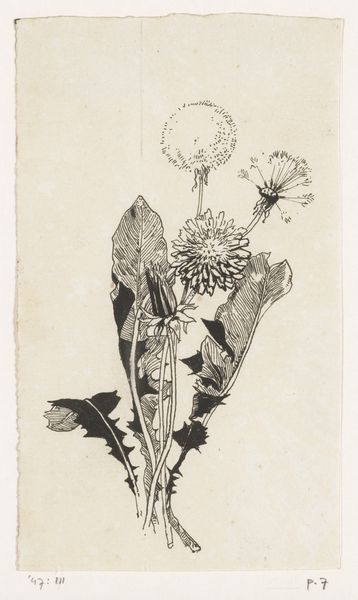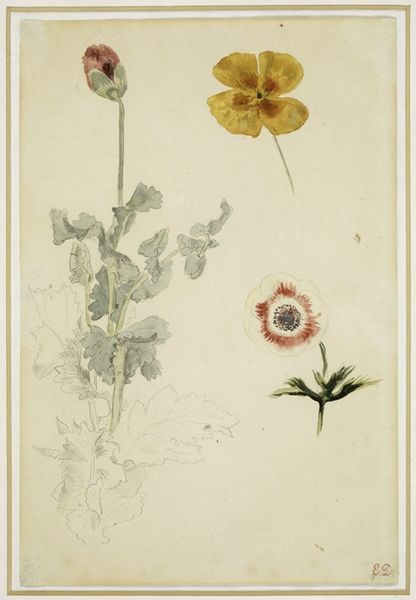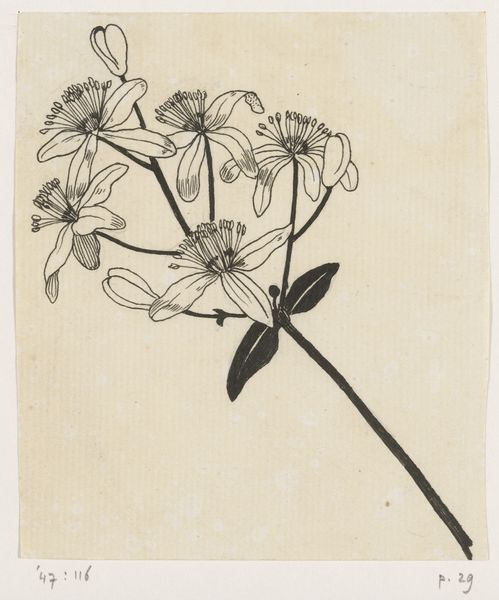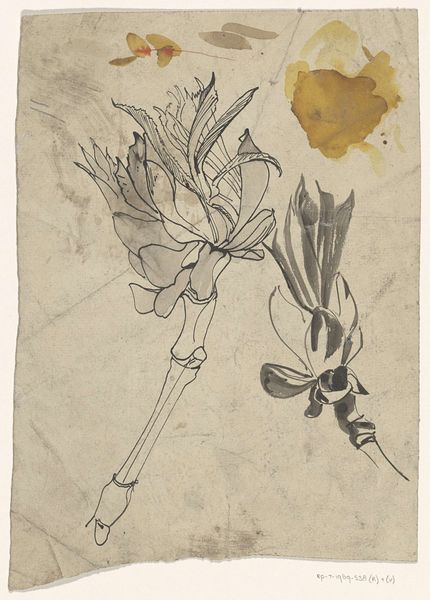
Dimensions: 14 3/4 x 9 in. (37.47 x 22.86 cm)16 1/4 x 21 15/16 x 1 3/16 in. (41.28 x 55.72 x 3.02 cm) (outer frame)
Copyright: No Copyright - United States
Curator: Right, let’s turn our attention to Piet Mondrian’s "Chrysanthemum," a drawing rendered around 1900, currently held at the Minneapolis Institute of Art. It combines watercolor, pencil, and charcoal in a beautifully subdued way. Editor: Mmm, it gives me this haunting feeling, almost ghostly. The bloom seems to hover against that murky background. There’s something both delicate and strangely powerful about it. Curator: Mondrian’s early work often gets overshadowed by his later geometric abstractions, but it is critical to look at this earlier period. Consider his embrace of those muted colors: sepia, ochre, umber – they are less about realism and more about capturing a feeling. And you rightly note the technique combines multiple media, demonstrating that Mondrian's hand has clear command over material concerns in this earlier work. Editor: Exactly. It’s like the flower is emerging from memory, from the earth itself. The watercolor allows a fluidity that almost dissolves the form, while the sharper lines define the fragility of each petal. He is clearly using color not to represent the color of a typical flower, but to give a feeling or essence of it. Curator: There’s a strong argument to be made that Mondrian is subverting traditional notions of flower painting. Instead of simple decoration or a show of wealth, here the flower is, indeed, almost decaying before our eyes, prompting reflection on the cycle of life, materiality, the natural world and its fate. Editor: Definitely a moodier meditation. More Emily Dickinson than a joyful summer’s day, and yet I also find something optimistic here, or at least hopeful, as though the flower persists in its essence. I also can't help thinking what an accomplishment to bring together water colors and charcoal in such a lovely harmony. Curator: Well, seeing it now, framed within our dialogue, reminds me that looking at art is also about watching what new insights will bloom for those with a more careful attention to craft and intention. Editor: Yes, perhaps like a flower from simple dirt, seeing what can be done with water colors, pencil and charcoal lets me be excited by the simple medium.
Comments
minneapolisinstituteofart almost 2 years ago
⋮
Piet Mondrian is famous for his paintings of irregular black grids on white backgrounds interspersed with rectangles in bright primary colors. Less familiar are the still lives and landscapes from earlier in his career. "Chrysanthemum" of 1900 reveals his early taste for naturalism inherited from the Hague School but ultimately indebted to the influence of the French Barbizon painters. In an autobiographical essay, Mondrian confessed: "I was always a realist . . . I always enjoyed painting flowers, not bouquets, but a single flower at a time." This austere presentation of the chrysanthemum is nonetheless innovative. Mondrian would renew his interest in flower painting again around 1908, but he substituted the natural brownish palette used here for a brighter, more artificial one.
Join the conversation
Join millions of artists and users on Artera today and experience the ultimate creative platform.
